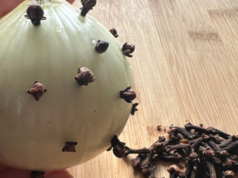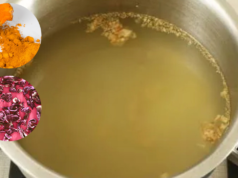Unlocking the Natural Power of Fig Sap: A Complete Guide 🌿🍃
Figs are not just known for their delicious fruit – their sap, often called fig milk, is a hidden gem with multiple practical uses. From traditional remedies to home applications, fig sap has been valued for centuries. If you’re interested in natural, sustainable living, learning how to safely collect and use fig sap is a rewarding skill to develop.
Important Things to Know Before Collecting Fig Sap

Before you start tapping into the natural benefits of fig sap, here are some essential tips to keep in mind:
✔️ Safety Precautions – Fig sap contains latex, which can cause skin irritation or discomfort if it comes into contact with the eyes. Always wear gloves and protective eyewear when handling the sap. ✔️ Best Time to Collect – The ideal time to harvest fig sap is late spring to early autumn, when the tree is actively growing and sap flow is most abundant. ✔️ Tree Health – Only collect sap from mature and healthy trees to avoid damaging young or weakened specimens.
Tools & Materials Needed
✔ Gardening gloves 🧤
✔ Protective eyewear 🕶️
✔ A sharp knife or small cutting tool 🔪
✔ A clean glass jar or plastic container for sap collection 🍶
Step-by-Step Guide to Collecting Fig Sap
🔹 Step 1: Prepare Your Tools – Ensure your knife or cutting tool is sharp and clean to make precise incisions and minimize damage to the tree. 🔹 Step 2: Choose the Right Spot – Select a healthy branch or trunk area where you can easily make a small incision. Avoid damaged or diseased areas. 🔹 Step 3: Make a Small Incision – Using your cutting tool, gently cut into the bark of the fig tree. Keep the cut shallow and no more than a couple of inches long to prevent excessive harm. 🔹 Step 4: Collect the Sap – Position your collection jar or container under the cut to catch the sap as it drips. Depending on the tree’s flow, you may need to wait a few hours. 🔹 Step 5: Seal the Cut – Once you have collected enough sap, apply a natural tree sealant or smooth mud over the cut to protect the tree from infections and aid its healing process.

Practical Uses of Fig Sap
Fig sap is a versatile natural substance with various benefits:
✔ Natural Remedy – Diluted fig sap has been traditionally used to treat skin irritations, warts, and minor cuts. ✔ Culinary Uses – When processed correctly, fig sap acts as a coagulant for making dairy-free cheese. ✔ Gardening Aid – It serves as a natural pest deterrent when applied to other plants in your garden.
Why Use Fig Sap?
Collecting and using fig sap is a fantastic way to embrace a more eco-friendly lifestyle while utilizing nature’s resources responsibly. By following the steps above, you can safely collect and use this incredible natural product.
Safety Note ⚠️
🔹 Always test diluted fig sap on a small patch of skin before applying it widely to ensure there’s no allergic reaction. 🔹 If you’re unsure about its uses or effects, consult with a herbalist or medical professional before applying it medicinally.
By harnessing the natural power of fig sap, you can unlock a world of benefits while living more sustainably. Try it out and experience nature’s gift firsthand! 🌿💚









